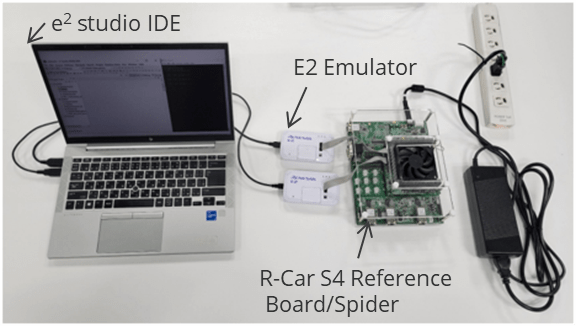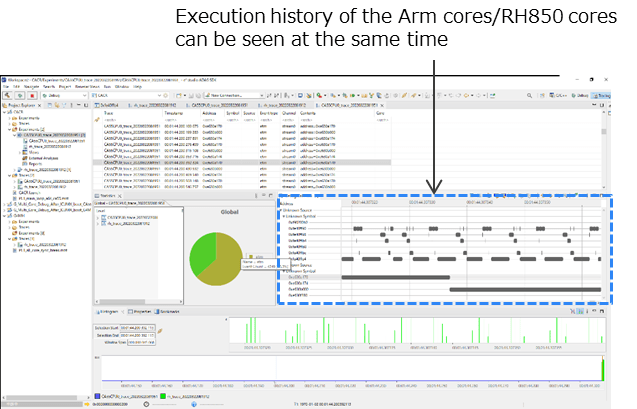R-Car S4 Reference Board/Spider
This solution provides a complete development environment with hardware and software for automotive gateway applications to support the new E/E architecture.
Learn about the new multi-core synchronous debugging support in the e2 studio integrated environment for R-Car S4. In-vehicle SoC devices contain multiple CPUs and IPs, and the software shares those resources. A lot of effort is required to analyze and solve the problem if a problem occurs in the operation during the software integration stage. To address this issue, Renesas has developed the “Multi-Core Debug and Trace Tool,” a tool that facilitates analysis and identification of the causes of problems resulting from the interaction of multiple hardware resources in R-Car.
This solution provides a complete development environment with hardware and software for automotive gateway applications to support the new E/E architecture.
The R-Car SDK (Software Development Kit) is an easy to start & easy to use development framework for the R-Car V Series SOCs from the successful Renesas Autonomy...
Automotive ECUs, especially those such as central ECUs with advanced processing, are equipped with multiple cores which work together in a single SOC. When you combine software running on multiple cores, it can be time-consuming to identify which software is causing the problem.
Examples of the issues when using traditional development tools are described below.
As seen in the figure on the right, it was previously a common practice to stop the operation of the G4MH cores and check the status of registers, memory, and variables using a debugger when something abnormal occurred in Software-A running on the leftmost G4MH core and you wanted to debug it. However, even if the G4MH core is stopped, the other cores would still be running, so if you attempt to see what was happening in Software-B or C when a problem occurs in Software-A, Software-B or C may have progressed further or, in some cases, may not be working at all. It may be that the behavior of Software-A is so strange, due to the fact that it is stopped, that we cannot get to the fundamental problem.

Example: When you want to identify a problem event (CR52 State-1) by referring to the state of the S/W variables and I/O inside the SOC when the problem event occurs.
